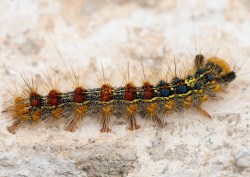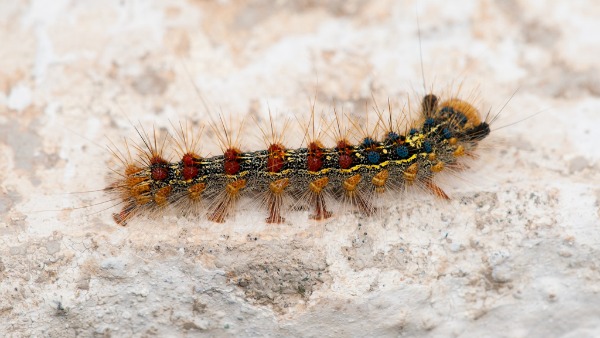
Sergey YeliseevGypsy moth larva, a pest in America’s forests, is even more pesky these days.
Pests are packing their metaphorical bags and heading for fresh starts nearer the North Pole as the climate warms around them.
Beetles, moths, fungi, and other pests that afflict forests and crops in the Northern Hemisphere are expanding their ranges northward by an average of 24 feet every day.
That’s according to British scientists who studied the records of infestations of 470 pests around the world since 1960 and measured the rate at which their ranges appeared to be shifting. They say their findings reveal a potential threat to food security posed by global warming.
The northerly march “is more rapid than that reported for many wild species,” the scientists wrote in a paper published Sunday in the journal Nature Climate Change. And it’s “nearly identical” to what would be expected from rising temperatures.
The findings show that termite pests are moving poleward the most quickly, at an average rate of 177 feet daily. Butterfly, moth, thrip, and beetle pests are moving north at an average of about 70 feet per day.
“There has been much research over the past couple of decades showing that wild populations of plants and animals have been moving poleward in response to warming,” study lead author and University of Exeter biosciences research fellow Dan Bebber told Grist. “Our paper shows that this is happening in pests as well.”
The northward movement of pests coincides with new farming practices that are pushing farms closer to the poles. But Bebber is convinced that the pests are moving in response to the changing climate. “Changes in farming practices and land use would probably lead to simple range expansion of pests, rather than a directional shift as we have demonstrated,” he said.




